Discovering the true cost of making sushi can be a compelling journey for culinary enthusiasts. Beyond the allure of its delicate flavors and artful presentation lies an intricate interplay of ingredients, techniques, and expertise.
We will delve into the various components that contribute to the overall expense of crafting this beloved Japanese delicacy, shedding light on both budget-friendly options and more indulgent culinary experiences.
How Much Does It Cost to Make Sushi?
Making sushi at home is affordable with the main expenses being the ingredients like sushi rice, rice vinegar, sugar, salt, nori, and fillings.
The cost can vary, but typically, you’ll spend around $17 to $36 for ingredients to make 10 to 15 sushi rolls.
What is Sushi?
Sushi is a popular Japanese dish that is known for its distinct tangy flavor. It is made with vinegared rice, known as “sushi rice” or “shari,” that is often wrapped with cooked or raw seafood along with different types of vegetables and fruits.
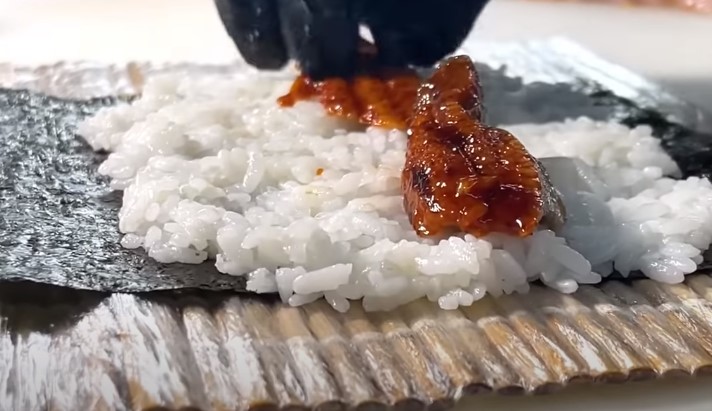
The rice is seasoned with rice vinegar, sugar, and salt, giving it a unique taste.
What Are the Ingredients and Equipment Needed for Making Sushi?
Making sushi is an artful culinary experience enjoyed by many around the world. Whether you’re a seasoned sushi enthusiast or a beginner looking to explore this delightful Japanese cuisine, understanding the essential ingredients and equipment is crucial for crafting authentic and delicious sushi rolls.
Below are the key components required to make sushi at home, along with the essential tools that will help you create sushi like a pro.
Ingredients for Making Sushi
Sushi Rice
The foundation of any sushi roll is sushi rice, also known as shari. This short-grain rice is key to achieving the right texture and stickiness that holds the sushi together. Rinse the rice thoroughly and cook it with the appropriate water-to-rice ratio for the best results.
Rice Vinegar
Seasoning the cooked rice with rice vinegar is essential for giving it that characteristic tangy flavor. A blend of rice vinegar, sugar, and salt is used to create the “sushi vinegar,” which is gently folded into the cooked rice while it cools down.
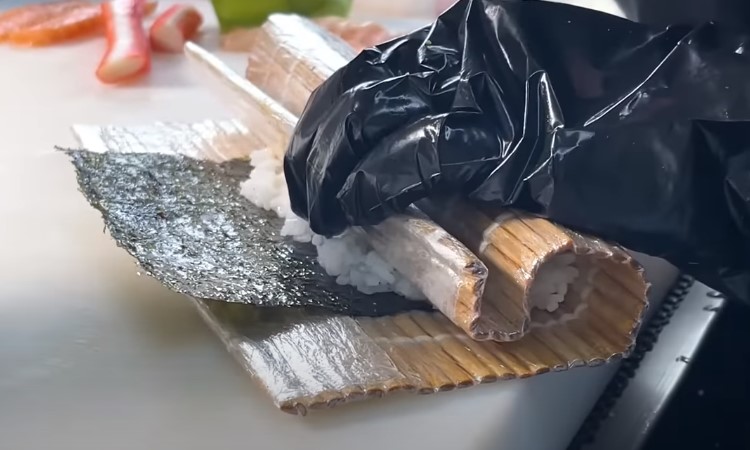
Sugar and Salt
These two ingredients, combined with rice vinegar [1], balance the flavors of the sushi rice. Adjust the amounts to suit your taste preference, ensuring a perfect balance between sweetness and saltiness.
Nori (Seaweed Sheets)
Nori is a type of edible seaweed that wraps around the sushi rice and fillings to create the outer layer of sushi rolls. Choose high-quality nori sheets that are fresh and have a deep green color.
Fillings
The filling options for sushi are virtually endless. Common choices include fresh fish (like tuna, salmon, or shrimp), vegetables (avocado, cucumber, carrots), and other ingredients such as crab meat, cream cheese, or tamago (Japanese rolled omelet).
Soy Sauce
Soy sauce is a staple condiment for sushi, used for dipping sushi rolls before consumption. Opt for a high-quality soy sauce to enhance the overall flavor.
Wasabi
This spicy green paste, made from Japanese horseradish, adds a kick of heat to sushi. It can be mixed with soy sauce for dipping or spread directly onto the sushi roll.
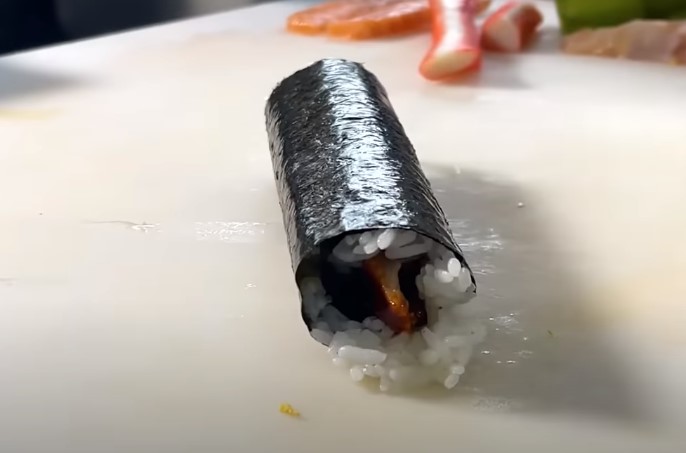
Pickled Ginger (Gari)
Pickled ginger serves as a palate cleanser between different sushi varieties. It offers a refreshing and slightly tangy taste that complements the sushi experience.
Equipment for Making Sushi
Bamboo Sushi Rolling Mat (Makisu)
The bamboo rolling mat is indispensable for crafting perfectly rolled sushi. It provides the necessary pressure to shape the sushi while keeping it intact.
Sharp Knife
A sharp and well-maintained knife is essential for cutting through the sushi rolls cleanly and precisely. A sushi knife or a traditional Japanese Santoku knife works best.
Rice Cooker
While sushi rice can be cooked on a stovetop, a rice cooker simplifies the process and ensures consistent results.
Wooden Rice Paddle (Shamoji)
A wooden rice paddle is used to gently mix the sushi vinegar into the cooked rice. The paddle’s flat surface prevents the rice from becoming overly mushy.
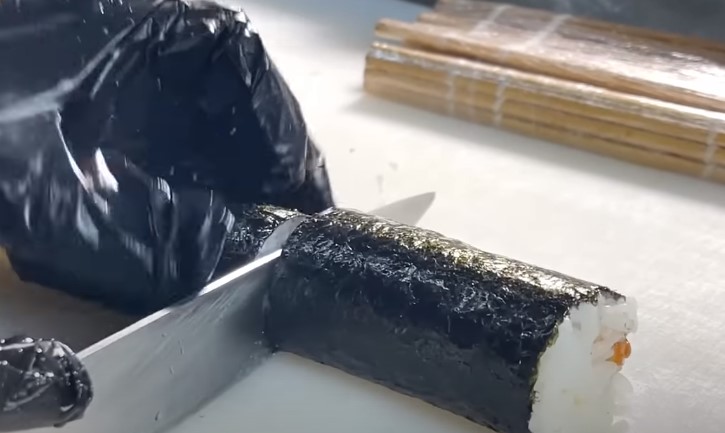
Plastic Wrap
Covering the bamboo mat with plastic wrap helps prevent the rice from sticking to it while rolling.
Cutting Board
A clean and spacious cutting board is essential for assembling and cutting the sushi rolls.
Damp Cloth or Bowl of Water
Keep a damp cloth or a bowl of water nearby to moisten your hands while working with sushi rice. This prevents the rice from sticking to your fingers.
Sushi Knife Guide (Optional)
For beginners, a sushi knife guide can be helpful to achieve evenly sized slices when cutting the rolls.
Factors Affecting the Overall Cost of Making Sushi
The allure of making sushi at home lies not only in its artful creation but also in its potential to be a cost-effective culinary endeavor. However, several factors come into play when determining the overall cost of making sushi.
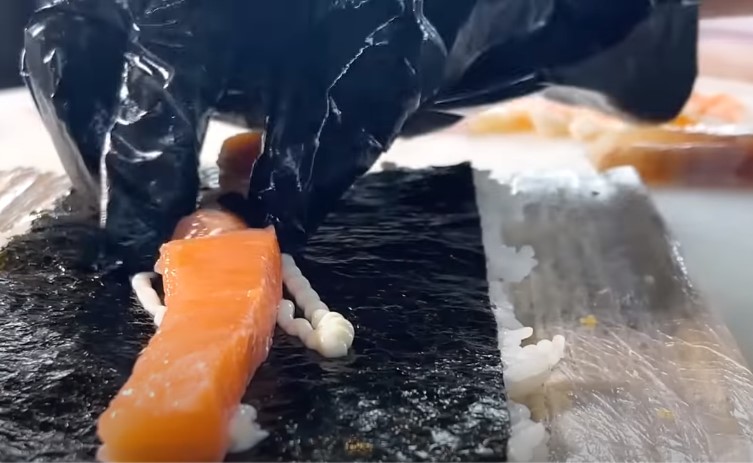
Below are the different elements that can affect the expenses involved in crafting this beloved Japanese delicacy, offering insights into how you can manage your budget without compromising on taste and quality.
Quality of Ingredients
The quality of ingredients used in making sushi can significantly impact the overall cost. Opting for premium-grade fish, such as fresh sashimi-grade tuna or wild-caught salmon, may be more expensive compared to lower-grade fish.
Similarly, using organic vegetables or specialty ingredients can increase the overall cost of your sushi rolls. While it’s essential to choose high-quality ingredients for a delightful culinary experience, cost-conscious alternatives can still provide satisfactory results.
Seasonality and Availability
The availability of ingredients can fluctuate based on their seasonal nature. Some fish or produce may be more abundant and affordable during certain times of the year, while they might be scarce and costly at other times.
Being mindful of the seasonal availability of ingredients can help you make budget-friendly choices without compromising on freshness and taste.
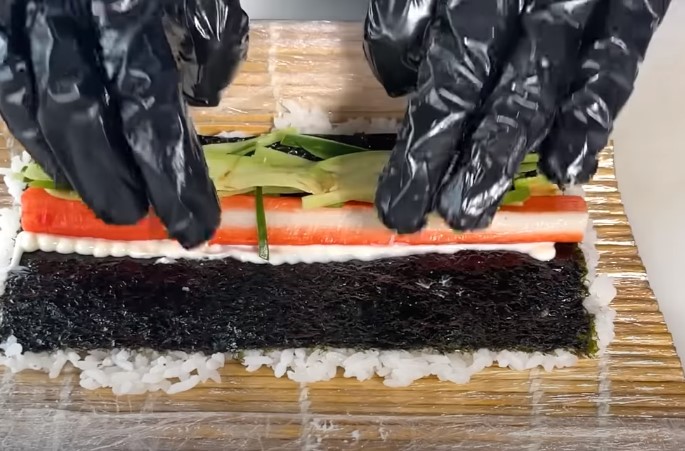
Location and Local Prices
The cost of ingredients can vary depending on your location and proximity to the source. Landlocked areas, for example, may have higher prices for seafood due to transportation costs.
Larger cities with access to diverse suppliers might offer more competitive prices. Consider exploring local markets and specialty stores to find the best deals on sushi ingredients.
Quantity and Serving Size
The number of sushi rolls you intend to make and the serving size per roll will directly impact the overall cost. If you’re making sushi for a larger group or a special occasion, you’ll need to purchase more ingredients, which can increase expenses.
Planning the quantity and portion sizes can help you estimate the cost more accurately and avoid excess spending.
Type of Sushi Rolls
The type of sushi roll you plan to make can influence the cost. Basic maki rolls with simple fillings tend to be more budget-friendly compared to elaborate rolls that feature premium ingredients or complex presentations.
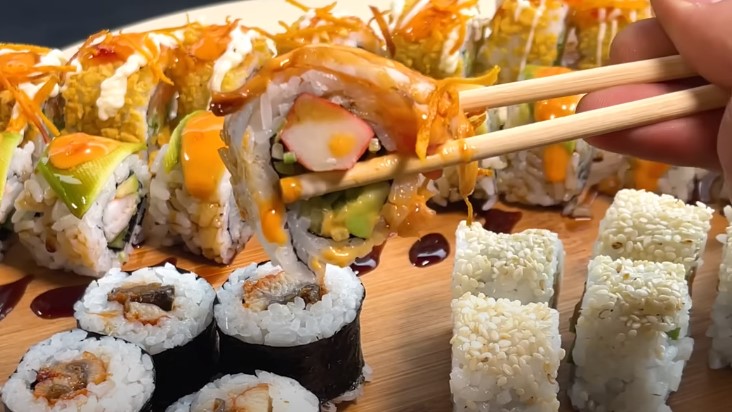
Experimenting with different sushi styles can be fun, but being mindful of their cost implications is essential.
Preparation Techniques
Different preparation techniques can affect the cost of making sushi. For instance, if you’re making sushi with tempura or using ingredients that require additional processing, it may lead to higher expenses.
Balancing the use of prepared and raw ingredients can help manage costs while still offering a diverse sushi experience.
Reusable Equipment
Investing in reusable sushi-making equipment, such as a bamboo rolling mat or a quality sushi knife, may seem costly initially but can save money in the long run. These durable tools can be used repeatedly, eliminating the need for frequent replacements.
Economical Alternatives
To manage costs, consider incorporating cost-effective alternatives without compromising on taste and quality. For example, using imitation crab meat instead of real crab or exploring local vegetables instead of exotic imports can be budget-friendly choices.
What Makes Sushi So Expensive?
Sushi, with its exquisite presentation and delicate flavors, is often associated with premium dining experiences. While making sushi at home can be relatively inexpensive, dining at high-end sushi establishments or purchasing sushi-grade ingredients can sometimes lead to higher costs.
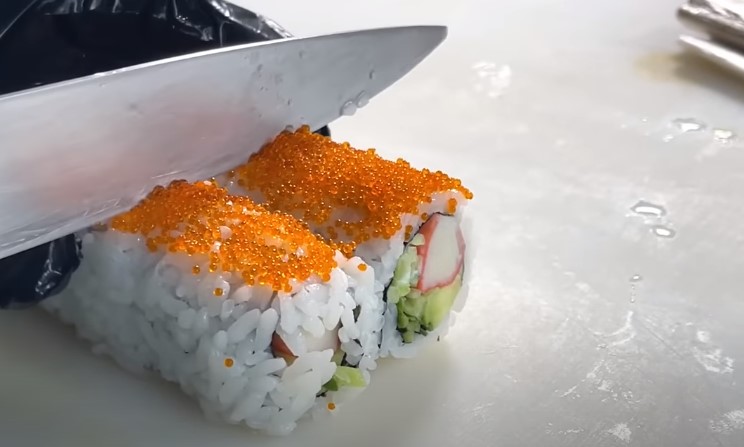
Below are the various factors that contribute to the price of this beloved Japanese delicacy, shedding light on the craftsmanship, sourcing, and culinary expertise that elevate sushi to a luxurious and sought-after culinary experience.
Sourcing Premium Ingredients
One of the primary reasons for the high cost of sushi is the use of premium ingredients. Sushi restaurants that strive for excellence often source top-quality fish, such as sashimi-grade tuna, yellowtail, and salmon.
These ingredients undergo rigorous quality checks and come from reputable suppliers, ensuring the utmost freshness and taste. Additionally, specialty items like uni (sea urchin), toro (fatty tuna belly), and premium caviar are considered delicacies, further contributing to the overall expense.
Artistry and Craftsmanship
Sushi-making is an art form that requires years of training and skill to perfect. A seasoned sushi chef, or itamae, possesses the expertise to prepare the fish, rice, and other ingredients with precision and finesse.
The meticulous artistry involved in shaping the sushi and arranging it in aesthetically pleasing presentations adds value to the dining experience. The time and effort invested in honing these culinary skills are often reflected in the price of each sushi piece.
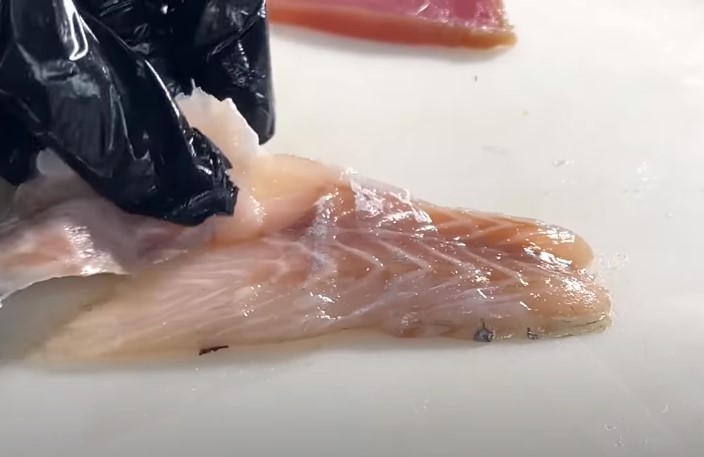
Sustainability and Responsible Sourcing
As global concerns about overfishing and environmental impact grow, sushi restaurants that prioritize sustainable and responsible sourcing may incur higher costs.
They seek to support fisheries that practice responsible fishing methods and promote the conservation of marine resources. This commitment to ethical sourcing contributes to the higher price tag associated with sustainably sourced sushi options.
Japanese Culinary Traditions
Authentic Japanese sushi is deeply rooted in cultural traditions and meticulous attention to detail. Many high-end sushi establishments adhere to these time-honored techniques, such as aging fish to enhance flavors or using traditional vinegar seasoning for the rice.
Preserving and honoring these culinary customs can lead to higher costs but ensures an authentic and unforgettable sushi experience.
Location and Real Estate Costs
The location of a sushi restaurant can significantly impact its overall expenses. Establishments situated in prime areas with high foot traffic or picturesque views often face higher real estate costs.
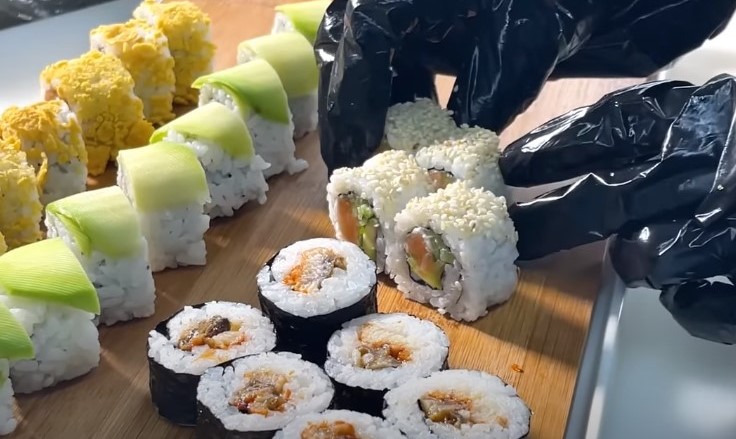
These expenses may be reflected in the menu prices, especially at upscale sushi restaurants that aim to provide a premium ambiance alongside their culinary offerings.
Labor Costs and Staff Expertise
As mentioned earlier, the expertise of sushi chefs plays a crucial role in the sushi-making process. Employing skilled and experienced itamae requires higher labor costs for the restaurant.
Additionally, exceptional sushi dining experiences often involve a dedicated staff, including servers with extensive knowledge of sushi, enhancing the overall customer experience but adding to the operating expenses.
Exclusivity and Demand
Sushi’s exclusivity and popularity as a gourmet cuisine also contribute to its higher cost. High demand for top-quality sushi can lead to increased prices, especially at renowned sushi establishments where reservations may be difficult to secure.
The exclusivity factor often adds to the allure of the dining experience, making it more desirable for discerning food enthusiasts.
Innovative and Limited Edition Offerings
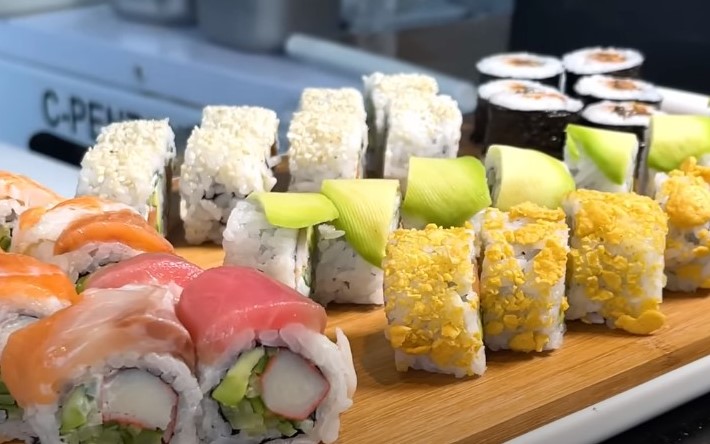
Some upscale sushi restaurants offer innovative or limited-edition sushi creations, often featuring rare and unique ingredients. These exclusive offerings cater to adventurous food connoisseurs willing to pay a premium for extraordinary and unforgettable dining experiences.
Conclusion
The cost of making sushi at home can vary based on ingredient choices, quantities, and individual preferences. While it can be relatively inexpensive with budget-friendly options available, using premium ingredients or making larger quantities may increase the overall cost.
Finding a balance between quality and affordability allows culinary enthusiasts to enjoy the art of sushi-making without breaking the bank.

